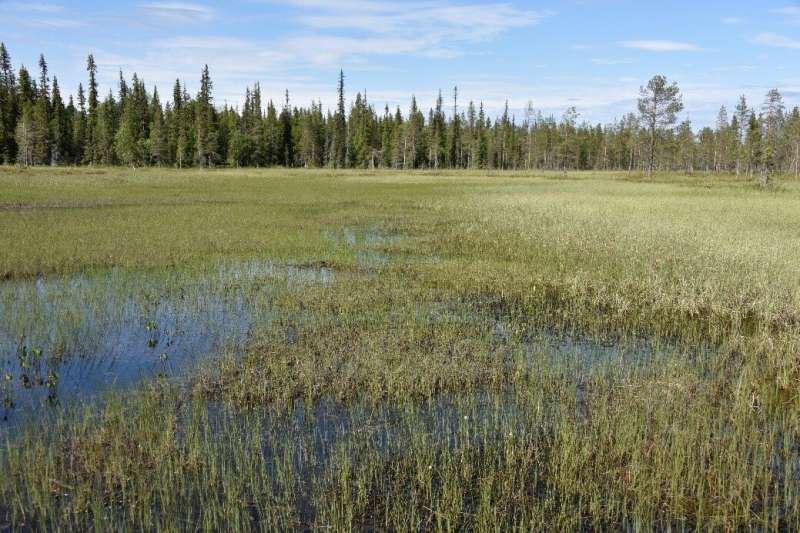Northern peatlands will lose some of their carbon dioxide sink capacity under a warmer climate

A Nordic study sheds new light on the role of northern peatlands in regulating the regional climate. According to the researchers, peatlands will remain carbon sinks until the end of this century, but their sink capacity will be substantially reduced after 2050, if the climate warms significantly.
Peatlands develop in waterlogged conditions which slow down plant decomposition rates, so that layers of dead plant material accumulate over many years as peat. They are a huge storehouse for significant quantities of carbon from the atmosphere. Despite only covering around 3% of the Earth's surface, peatlands contain roughly a fifth of its soil carbon. In Europe, these ecosystems store five times more CO2 than forests.
A Nordic team of researchers used novel arctic modelling tools and previously published data on peatland carbon accumulation rates, vegetation and permafrost characteristics to study the role of northern peatlands in regulating the regional climate. A major concern is whether these ecosystems will continue to remain carbon sinks and help in mitigating climate change under changing climatic conditions. The modelling study, published in Global Change Biology, aims to address these important questions.
The model (LPJ-GUESS Peatland) used in this study captured the broad patterns of long-term peatland carbon dynamics at different spatial and temporal scales. The model successfully simulated reasonable vegetation patterns and permafrost extent across the pan-Arctic. Under contrasting warming scenarios (mild and severe), the study showed that peatlands on average continue to remain carbon sinks until the end of this century. However, their sink capacity would be substantially reduced after 2050 under the high-warming scenario due to an increase in soil mineralization rates. This modelling approach contributes to a better understanding of peatland dynamics and its role in the global climate system at different spatiotemporal scales. A major uncertainty of future predictions is the impact of formation of new peatlands with potential change in the peatland sink capacity owing to permafrost thawing and possible landscape changes.
"With this study our aim is to highlight the importance of peatlands in the global carbon cycle. We adopted an advanced peatland modelling tool to address the issues pertaining to peatland carbon balance in the past and future climate conditions. Now, our plan is to take forward our current research on the role of peatlands in regulating the regional climate by coupling our state-of-the-art peatland model with global and regional climate models in order to quantify the peatland-mediated feedbacks," says Postdoctoral Fellow Nitin Chaudhary, the lead author of the study, from the University of Oslo.
"Arctic carbon balance modelling studies working with coarse spatial resolution (half-grid scale) have often ignored the role of peatlands. This study emphasises the role of natural peatlands in the Arctic carbon balance and regional climate regulation. Such studies are needed so that their role is well defined in the global carbon models," University Researcher Narasinha Shurpali from the University of Eastern Finland says.
More information: Nitin Chaudhary et al, Modelling past and future peatland carbon dynamics across the pan-Arctic, Global Change Biology (2020). DOI: 10.1111/gcb.15099
Journal information: Global Change Biology
Provided by University of Eastern Finland




















